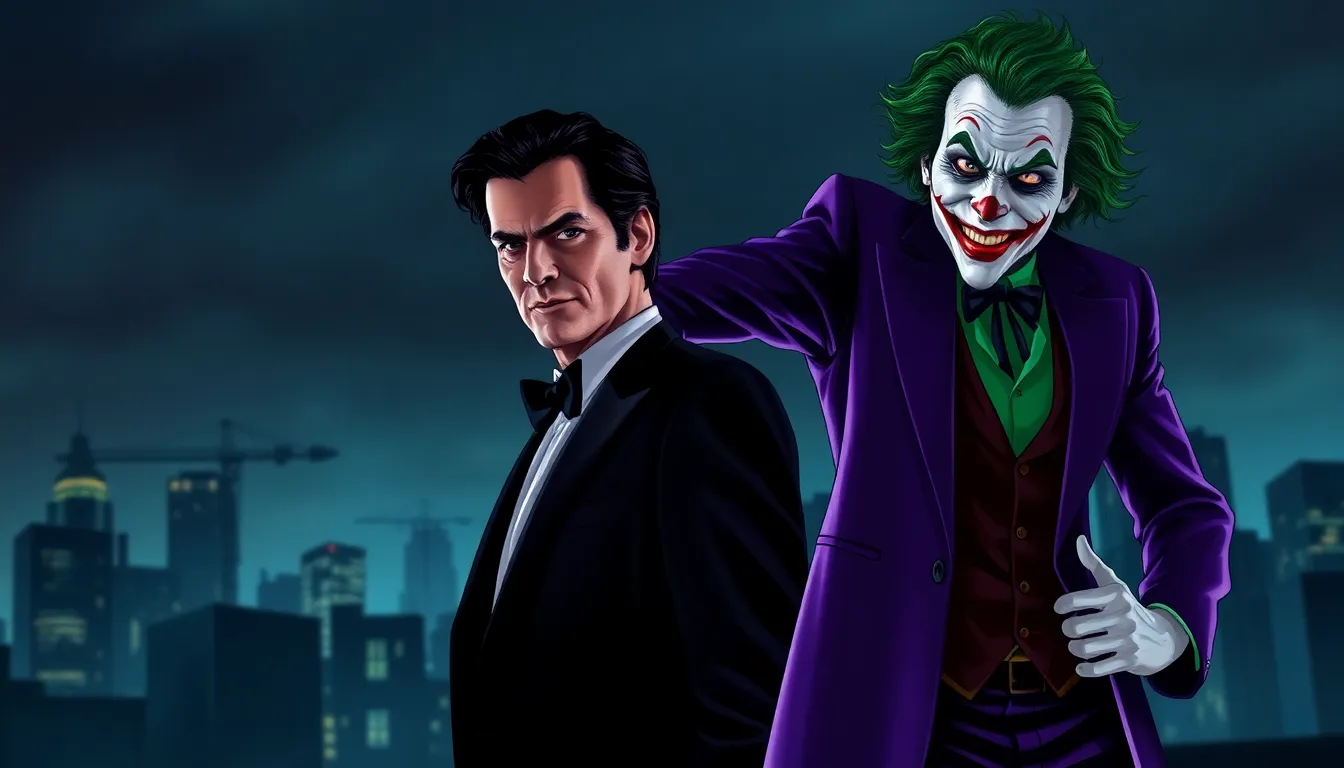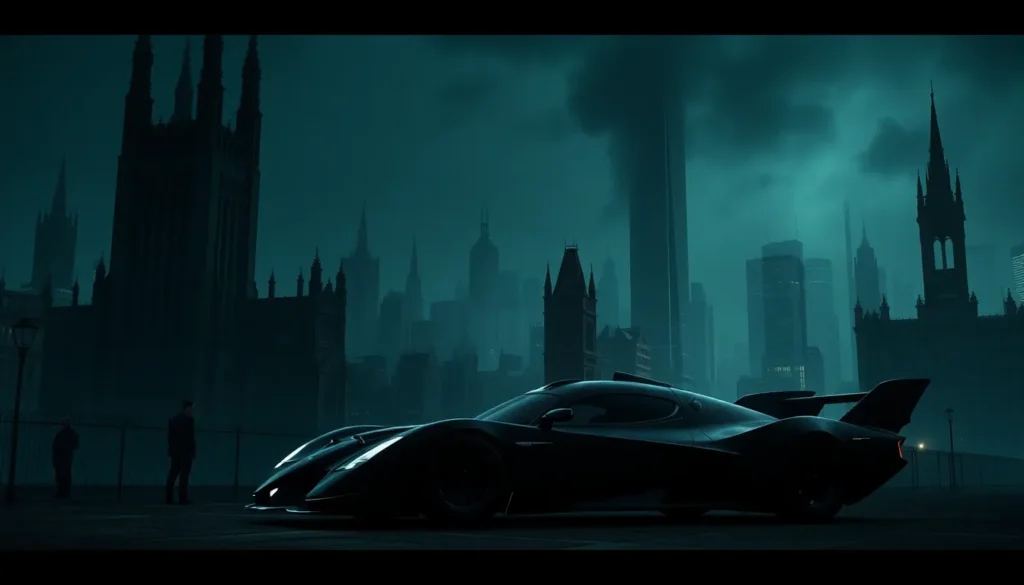Table of Contents
ToggleIn a world where caped crusaders reign supreme, the 1989 film Batman stands as a legendary masterpiece that redefined superhero cinema. With its dark, brooding atmosphere and unforgettable performances, it’s a flick that’ll have you questioning your own sanity for not watching it sooner. Michael Keaton’s portrayal of the brooding billionaire turned vigilante is so iconic, it might just inspire you to don a cape and patrol your neighborhood—though maybe skip the bat-shaped vehicle for now.
Overview of Batman (1989 Film)
Batman, released in 1989, marks a pivotal moment in superhero cinema history. Directed by Tim Burton, the film introduces audiences to a darker, more complex version of Gotham City. Michael Keaton’s portrayal of Bruce Wayne/Batman redefined the character, displaying a depth seldom seen in previous adaptations. The film’s influence extends beyond its box office success, serving as a blueprint for future superhero films.
The plot centers around Batman’s battle against the Joker, played by Jack Nicholson. Their dynamic showcases the clash between good and evil, bringing a thrilling intensity to the screen. The cinematography and production design contribute significantly to the film’s moody atmosphere. Gothic architecture and shadowy visuals enhance the dramatic tension, immersing viewers in a unique experience.
Danny Elfman’s score amplifies the film’s emotional weight, with memorable themes that resonate long after the credits roll. Action sequences are stylish and impactful, balancing drama with visual spectacle. The film’s marketing campaign also set a precedent, generating significant public interest and anticipation.
Critics praised the film for its ambitious storytelling and striking visuals. Batman received several award nominations, solidifying its status as an iconic piece of cinema. Audiences often cite this film as a defining moment in their appreciation for superhero narratives, underscoring its lasting impact on popular culture.
Tim Burton’s Batman stands as a classic, combining entertainment with intricate character development. Viewers often find themselves drawn to its themes of duality and heroism, further solidifying its place in film history.
Main Cast and Characters

The film features a talented cast that brings the iconic characters to life, significantly impacting its story and reception.
Michael Keaton as Bruce Wayne
Michael Keaton delivers a memorable performance as Bruce Wayne. His portrayal embodies the duality of the character, balancing charm with deep internal conflict. Keaton’s rendition offers a more vulnerable side, showcasing Bruce’s struggles with his identity as Batman. This nuanced approach redefined the superhero genre, presenting Batman as more than a masked vigilante. Critics noted Keaton’s ability to convey depth and complexity, allowing audiences to connect with Bruce on a personal level.
Jack Nicholson as The Joker
Jack Nicholson’s performance as The Joker stands out as one of cinema’s most iconic villain portrayals. Infusing the character with charisma and chaos, Nicholson crafts a memorable antagonist. His portrayal brings a blend of humor and menace that captivates audiences. The Joker’s unpredictability serves as a perfect foil to Batman’s serious nature, enhancing the film’s tension. Nicholson’s vivid interpretation set a high standard for future portrayals of the character, solidifying his mark on superhero films.
Plot Summary
The 1989 film Batman intricately weaves a tale of heroism, villainy, and moral complexity. Bruce Wayne assumes the role of Batman to combat the anarchic Joker, introducing viewers to a vividly dark Gotham City.
Key Themes
Duality emerges as a prominent theme, symbolizing the conflict between Batman and the Joker. This battle exemplifies the struggle between good and evil, showcasing the psychological depths of both characters. Gotham City’s corrupted nature reflects themes of chaos and control, emphasizing the impact of crime and justice. Identity plays a vital role as well; Bruce Wayne navigates his public persona while grappling with his alter ego’s responsibilities. Ultimately, his journey illustrates sacrifice and the personal cost of leading a dual life.
Notable Scenes
Several scenes stand out, captivating audiences with their intensity. The film opens with a gripping sequence, introducing the Joker’s rise to power as he robs Gotham’s banks. A pivotal moment occurs during the iconic confrontation in the Gotham Cathedral, where Batman faces the Joker amid a clash of ideals. The infamous Batmobile chase showcases cutting-edge special effects while heightening the tension of Batman’s pursuit of justice. Another memorable scene features the Joker’s chaotic art exhibition, combining humor and danger, which further highlights his unpredictable nature. Each scene contributes to the overall atmosphere, reinforcing the film’s legacy in superhero cinema.
Cinematic Style and Direction
Tim Burton’s direction plays a crucial role in defining the film’s unique style. His ability to blend gothic elements with mainstream storytelling sets a new standard for superhero films.
Tim Burton’s Vision
Gotham City, under Burton’s vision, becomes a character in itself, showcasing an eerie yet compelling landscape. His stylistic choices, such as exaggerated proportions and dark color palettes, create a captivating atmosphere. Burton emphasizes psychological depth in characters, particularly in the duality of Bruce Wayne and the Joker. This exploration of identity and morality reveals a complex narrative beyond typical superhero tropes. The whimsical yet macabre tone contributes to a fresh interpretation of Batman, making it memorable.
Visual Effects and Production Design
Innovative visual effects elevate the film’s impact significantly. The production design features elaborate sets that immerse viewers in Gotham’s dark world. Iconic locations, like the Gotham Cathedral and the Batcave, enhance the film’s immersive quality. Practical effects complement budding CGI technology, making key scenes memorable. The distinct look aligns with Burton’s artistic vision and adds to the story’s emotional weight. Production elements, from costumes to set details, create a cohesive experience that defines the film’s aesthetic appeal.
Soundtrack and Score
The soundtrack of the 1989 film Batman significantly contributes to its legacy and immersive experience. Danny Elfman’s score plays a crucial part in establishing the film’s dark and moody tone.
Influence of Danny Elfman
Danny Elfman’s composition for Batman sets a new standard for superhero film scores. The main theme, characterized by its haunting melodies and powerful orchestration, creates an immediate sense of foreboding. Critics and audiences alike recognize this theme as a defining element of the film, often associating it with Batman’s identity. Elfman expertly balances moments of tension and drama, heightening emotional stakes during pivotal scenes. The score seamlessly integrates with the visual storytelling, enhancing both action sequences and quieter moments. Over the years, Elfman’s work has influenced numerous composers, reshaping expectations for future superhero films. Several film scores reference this iconic composition, solidifying its place in cinematic history.
Iconic Songs
In addition to the score, the film features iconic songs that further enrich its atmosphere. Prince’s contributions, including tracks like “Batdance,” capture the film’s essence and era. These songs blend seamlessly into the narrative, showcasing the dynamism of Batman’s world. The inclusion of these tracks introduces a pop culture element, appealing to a broad audience. “Batdance,” in particular, reached commercial success, illustrating the film’s impact beyond the screen. The synergy between the score and the songs adds depth to George’s character and his relationship with Gotham City. Audiences remember these melodies even decades later, reflecting the film’s lasting cultural relevance.
Cultural Impact and Legacy
Batman (1989) significantly transformed superhero cinema. Its darker tone and complex characters resonated with audiences, leading to a revival of interest in comic book adaptations. Tim Burton’s unique style redefined the visual aesthetics of superhero films. Gotham City, depicted as a gothic, oppressive environment, contributed to the film’s distinctive atmosphere.
Critical acclaim followed, with the film achieving various awards and nominations. Audiences praised the performances, especially Michael Keaton’s nuanced take on Bruce Wayne and Jack Nicholson’s iconic portrayal of the Joker. Their characterizations influenced future adaptations, setting high expectations for subsequent films.
The soundtrack played an essential role in the film’s success. Danny Elfman’s score, featuring haunting melodies, established a benchmark for superhero film music. Songs by Prince, including the popular “Batdance,” expanded the film’s cultural footprint, appealing to diverse audiences.
Merchandising opportunities flourished, generating billions in revenue. Action figures, apparel, and collectibles became popular, solidifying the film’s status as a cultural phenomenon. Its marketing strategy captivated audiences, leading to record-breaking box office figures in 1989.
Long-term, Batman’s legacy persists in contemporary media. Many filmmakers cite it as a primary influence. It set a standard for character depth and storytelling that later films, including Christopher Nolan’s Dark Knight trilogy, would emulate. The film’s impact on popular culture is evident in numerous TV shows, films, and merchandise that continue to celebrate its iconic status.
Overall, Batman’s profound influence reshaped expectations for superhero narratives, resonating across generations and solidifying its place in film history.
The 1989 film Batman remains a cornerstone of superhero cinema. Its unique blend of gothic aesthetics and complex character portrayals set a new standard that continues to influence filmmakers today. Michael Keaton’s nuanced performance as Batman and Jack Nicholson’s unforgettable Joker create a dynamic that captivates audiences even decades later.
Tim Burton’s visionary direction and Danny Elfman’s haunting score elevate the film, making it a cultural touchstone. The legacy of Batman extends beyond its initial release, shaping the future of comic book adaptations and resonating with generations of fans. This film not only redefined a genre but also left an indelible mark on popular culture, ensuring its place in cinematic history.







